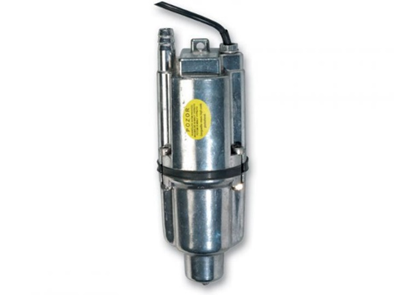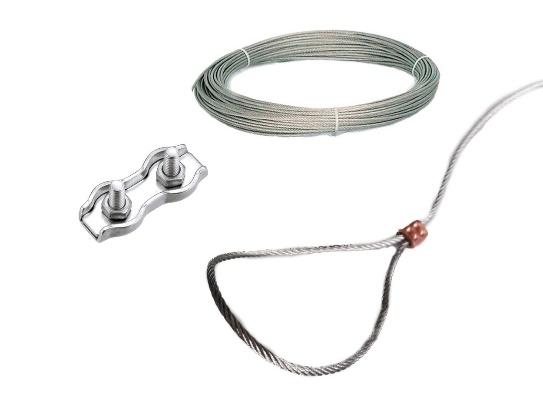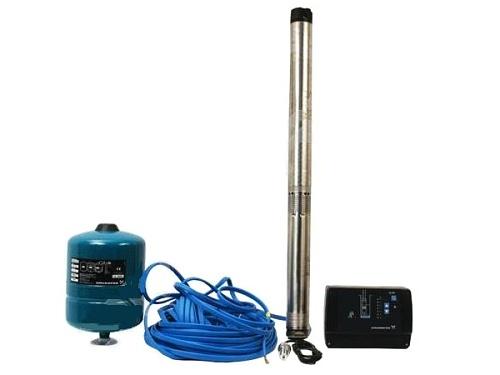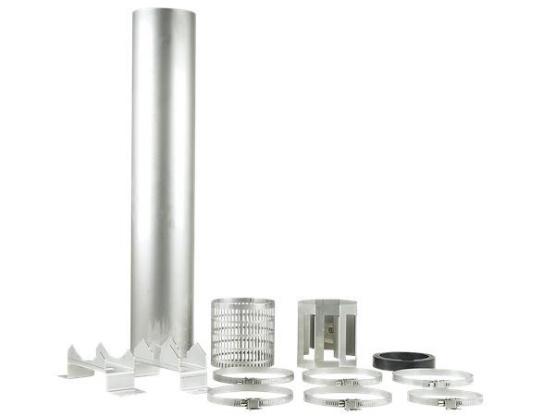Submersible well pumps are a great solution for pumping clean groundwater regardless of the water source (from wells, springs, collection tanks, etc.). A well-chosen deep well pump will ensure a constant water supply while maintaining low costs and high pump reliability. However, it is important to select a pump that matches the conditions of your well or spring.
A submersible water pump is designed for long-term submersion, guarantees easy installation and virtually maintenance-free operation for many years. We recommend choosing a pump with built-in protective features, such as for example submersible well pump Grundfos. The pump will take care of everything necessary for you and there is no need to purchase additional accessories. However, even the best submersible well pump can have its lifespan extended by ensuring excellent conditions.
Submersible pumps are designed for pumping clean water. Generally, the more sandy material and other abrasive substances present in the water, the sooner the pump will wear out, therefore it is important for new or contaminated wells to perform their cleaning. Each well pump can operate in the presence of a certain amount of solid particles and this value is specified by the manufacturer.
Therefore, you should not forget about regular well water checks and ideally clean the well every 5 years. Not only will this ensure the smooth operation of the submersible pump, but also the cleanliness of the pumped water.
For achieving the highest quality water from your well, we recommend installing a household cold water filter, which also protects your appliances.

A submersible well pump operates submerged below the dynamic level of the well and it is essential to ensure that the water level does not fall below the level of the pump. The pump should be suspended in the well deep enough. In case of excessive depletion of the well, it may lead to dry running of the submersible pump, and thus to its damage.
The solution is to acquire a level monitoring probe or a pump that already has dry-run protection built-in (for example Grundfos SQ and SQE submersible well pumps) and can stop pumping in time in case of water shortage in the well.
The correct depth of installation of the submersible pump in the well is important not only as a prevention against dry running, but also as a protection against damage to the pump by excessive water pressure. When placed at a greater submersion depth, the water column exerts higher pressure on the submersible pump, which then affects the pump's seals. If the well pump is submerged deeper than it is manufactured for, it may lead to damage to the internal parts of the pump by water seepage.
In case of water shortage in the well it is possible that the well pump is not installed at the correct depth. However, before lowering the pump deeper into the water well, first verify the correct depth of submersion for your pump. The problem with insufficient water, however, may be caused by low productivity of the well, therefore it is necessary to first find the cause.

Cooling of the deep well pump is another reason why it is important to pay attention to the amount of water in the well. Sufficient water flow around the pump (at least at a speed of 0.15 m/s) ensures cooling of the well pumps to prevent motor overheating. An optimal space between the pump casing and the well wall is at least 10 mm and also serves as protection against mechanical damage to the submersible pump.
If it is not possible to ensure the necessary cooling of the well pump with water flow, the same effect can be achieved by installing a cooling jacket.
Well pumps can operate within a certain voltage range. However, the voltage in the electrical network is not always constant and its fluctuations can lead to more frequent pump shutdowns and motor damage.
Grundfos SQ and SQE submersible well pump is equipped with a unit with a frequency converter and operates in a wide voltage range, therefore it is capable of ensuring stable water supply even in the event of voltage fluctuations in the electrical network.

Frequent starting and stopping of the submersible well pump, whether due to unsuitable voltage or due to a lack of water, excessively burdens the motor and the pump's contacts, significantly reducing the lifespan of the pump. Each type of well pump specifies a recommended maximum number of starts, which should not be exceeded to protect the pump. On the other hand, it is not good to leave the well pump off for a long time. The motor of the submersible pump needs to be started at least once a year, to prevent it from potentially seizing up.
Insufficient cooling of well pumps, fluctuations in electrical network voltage, frequent starting and stopping of the submersible pump, and long-term operation of the pump at maximum flow lead to high electrical and mechanical loading, which results in higher wear and tear and shorter lifespan. For the smooth operation of well pumps, it is important to minimize all these undesirable factors. The pump must be chosen to work closest to the point of best (peak) efficiency, while it should operate at maximum flow only minimally.
If you are considering buying a submersible water pump, choose one with built-in features that automatically contribute to lower electrical and mechanical loading. It will repay you with longer lifespan and lower operating costs.

You can use a submersible water pump throughout the year, provided the conditions for its operation are met. However, if you do not use the water source where the pump is installed during winter, it is necessary along with winterizing the well or spring to winterize the submersible pump itself as well.
Submersible well pumps are not frost-resistant, therefore to winterize the pump disconnect it from electricity, remove it from the well/spring, drain the water from it and store in a safe place where it will not freeze. Carefully winterize the water source itself to prevent contamination due to runoff rain and melting snow, even if it serves only as a source of utility water. A larger amount of sandy material and other abrasive substances in contaminated water could damage the pump when restarted. If you are unsure of the water quality, have it analyzed before pumping again, or clean the well preventively.
Regular service of the submersible pump is an excellent way to ensure that your pump is always in top condition. It includes replacing worn parts (especially seals). The interval may vary depending on flow, presence of solid particles, and well conditions, but generally, it is recommended to perform submersible pump service every 3 years.